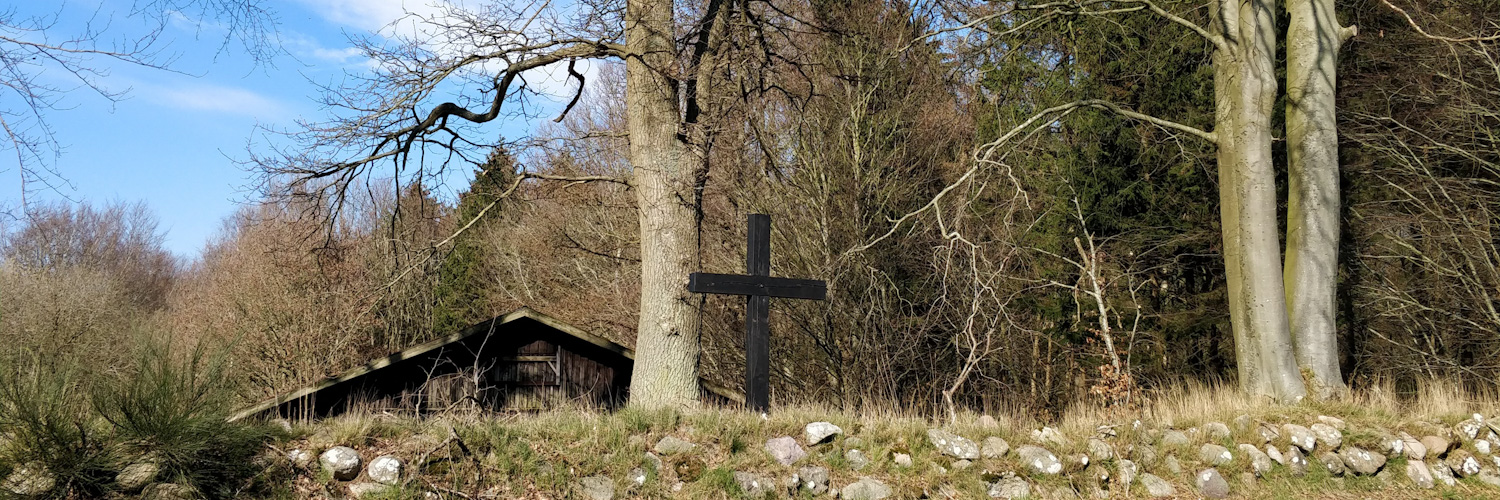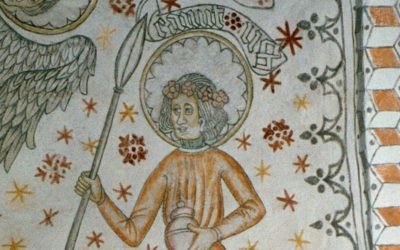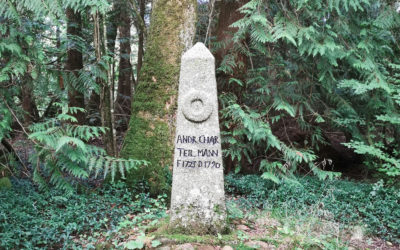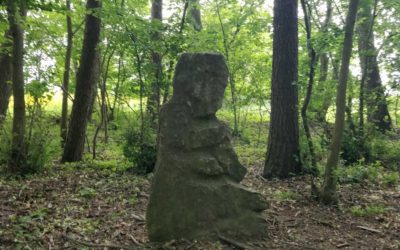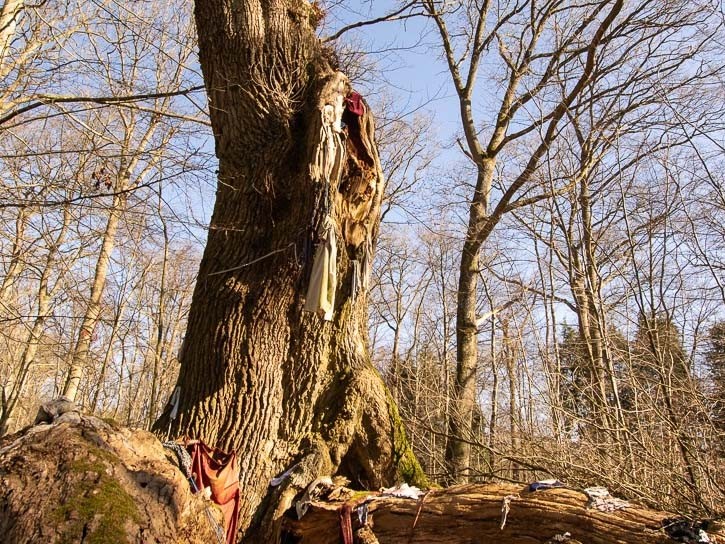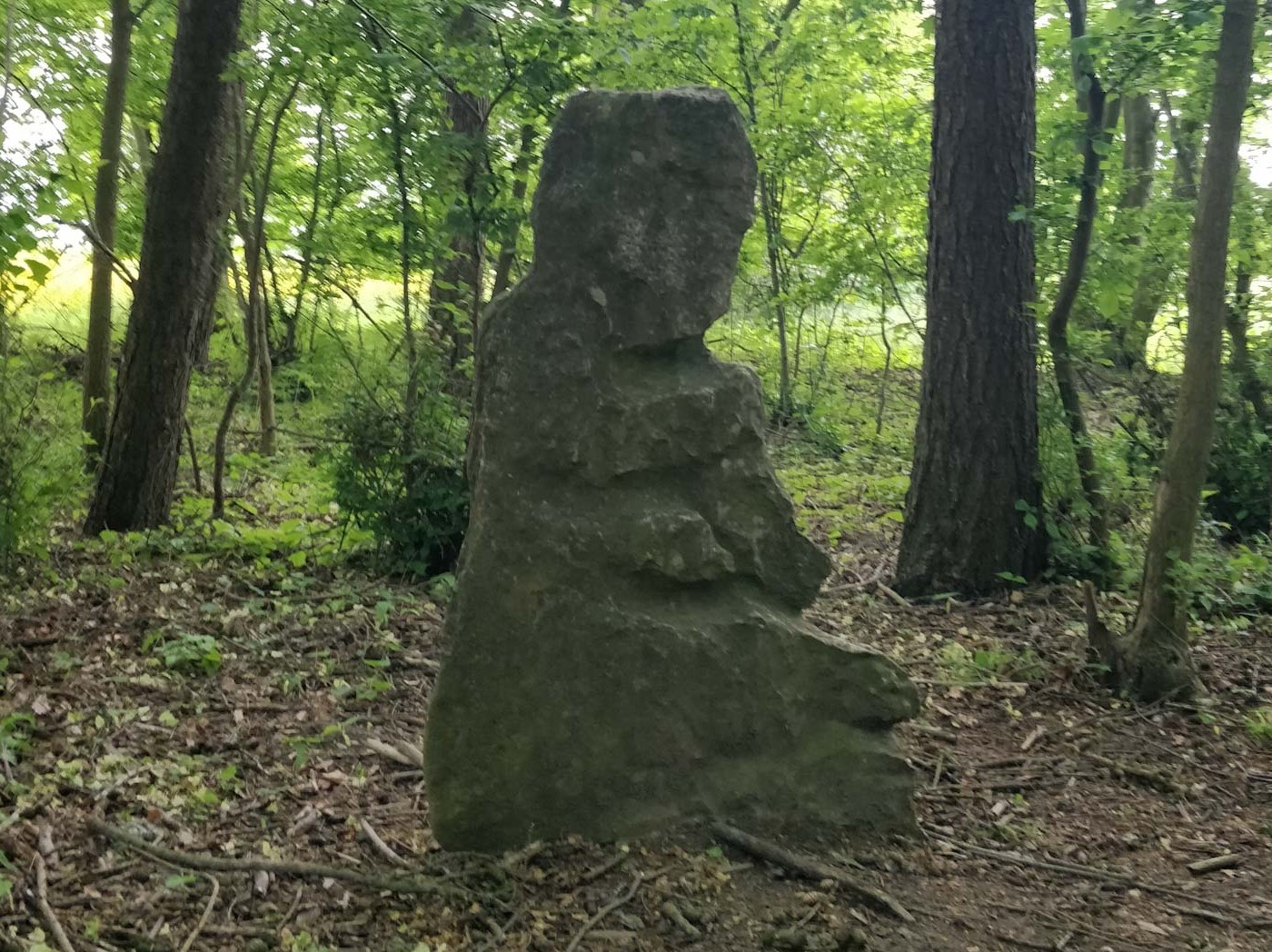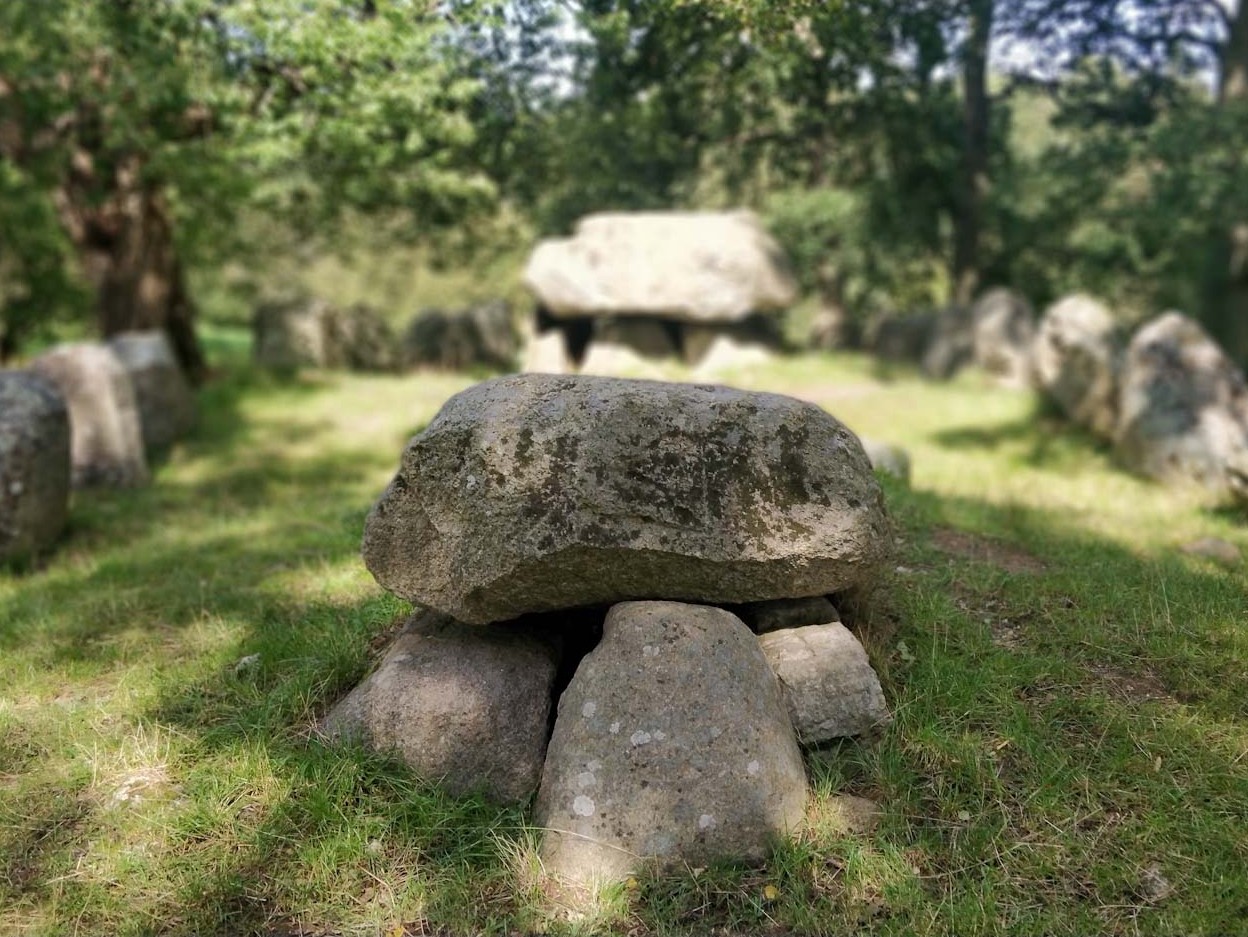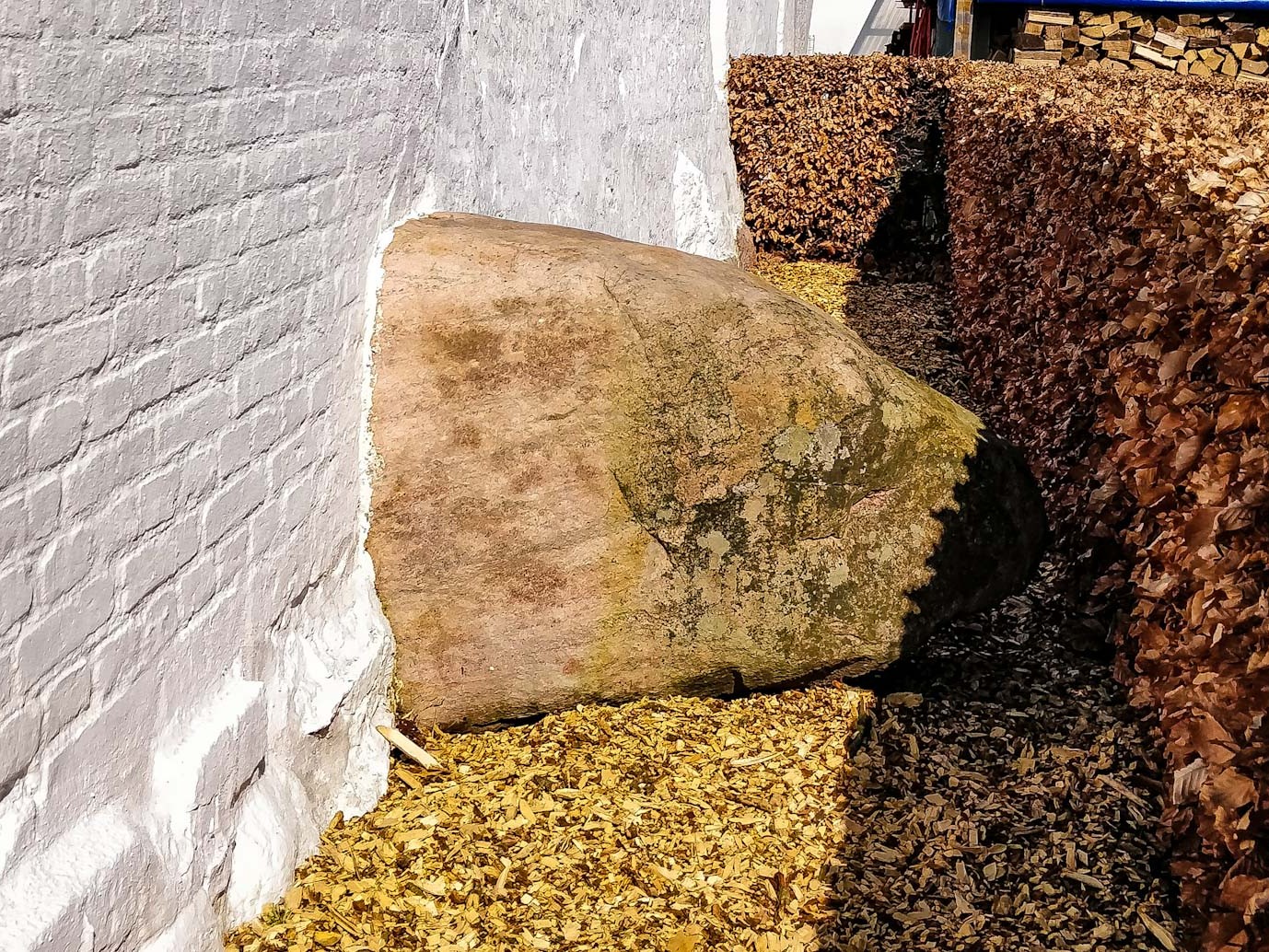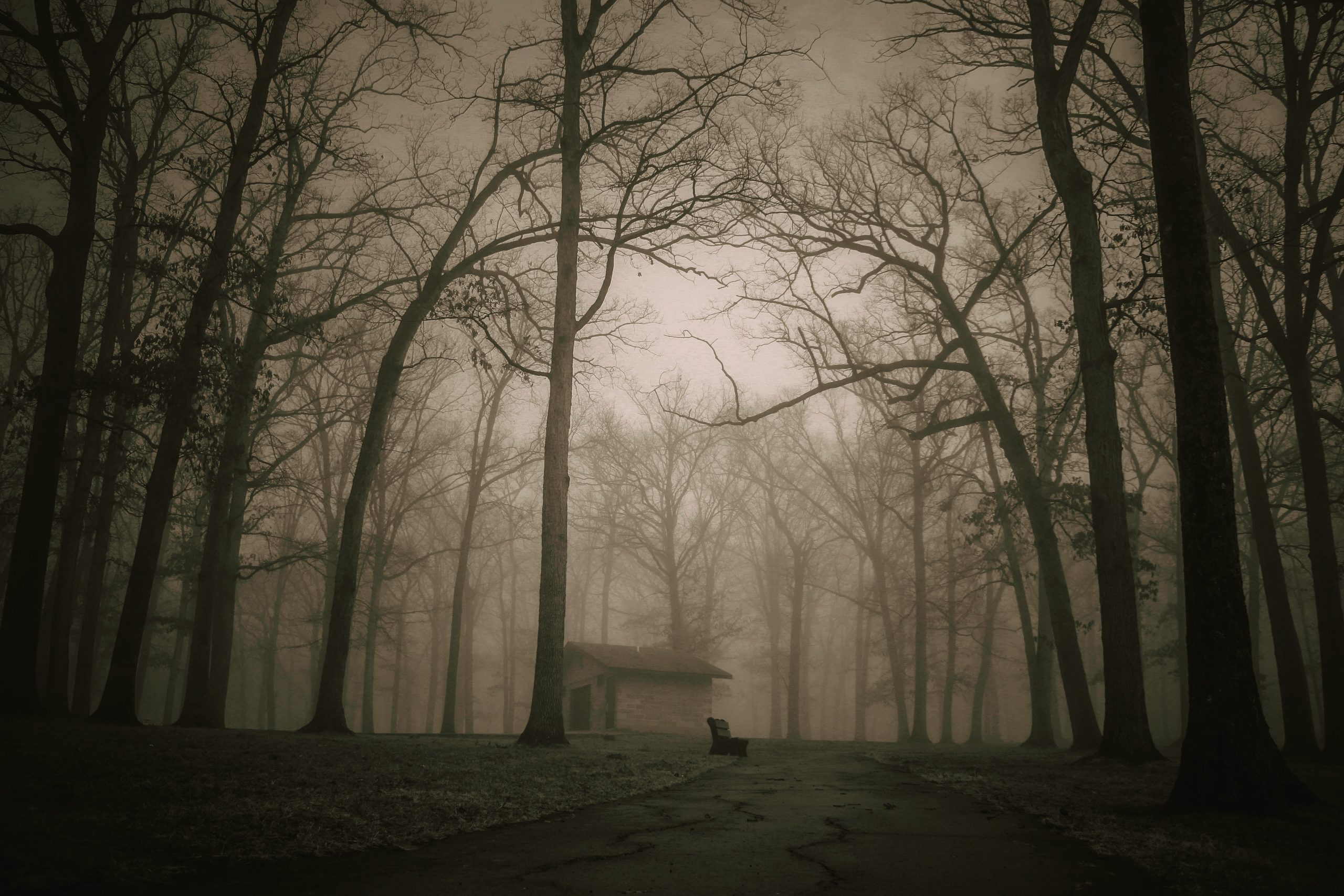GPS: 55.538179, 11.423256
Parking: There is a small driveway right next to the cross where its possible to park temporarily
Good to know:
Nearby attractions: The Blood Stone, The Snare Hill Dolmen
About the cross
The Conradineslyst Cross, also known as the Skellebjerg Cross, is an approximately 1.5 x 1.3 metre large oak cross that stands on the roadside of Sorøvej, between Skellebjerg and Ruds Vedby. It is known with certainty that there has been a cross in the area since the middle of the 18th century, most likely also before, and although it has been renewed several times over the years, it has retained the same shape and dimensions at least since 1842. In more recent times, the cross has become associated with the nearby Conradineslyst estate, although it is actually another local estate, Vedbygård, who maintains and makes sure to replace it when it is needed. Every time it is replaced, a splinter from the old cross is inserted into it, assuring that a certain constant remains over time.
At first glance, the cross might well fall into the old tradition of Catholic road crosses. However, there are a number of legends attached to it which point to a different, and more mysterious, origin.
Legends surrounding the cross
The most common legend associated with the Conradineslyst Cross says it was erected in memory of a young girl who once died at the spot. There are several variations of the legend, but most mention a maid – either from Vedbygård or Conradineslyst – who on her way home from a celebration in the area was assaulted and killed by one or more men, who subsequently buried or in other ways disposed of her corpse. The girl was accompanied by her little dog who escaped and later helped uncover the murder and expose the killers. There is also a somewhat less common “additional legend” that the young girl haunted the area after her death, therefore having to be dealt with by a local priest. In this legend the cross was raised to make sure she stayed in the ground.
In addition to the aforementioned legends, there are also a number of more isolated stories about the cross, several of which mention strange dogs. A local workman is said to have once passed by the cross, when a dog jumped up on the shoulders of him and attached itself. He tried desperately to get it off, but to no avail. The animal became heavier and heavier and eventually the man fainted, only to wake up much later. An even more interesting and well-documented account in the same vein, involves two brothers, both in their 30’s, who one summer evening in 1905 were out bicycling in the area. As they approached the Conradineslyst Cross, they saw what looked like a large dog standing out in the middle of the road, its eyes glowing from the reflection of the bicycle lights. They both figured the animal would get scared and run away when they got closer, but instead something very strange happened. Suddenly the “dog” let out a moan and almost seemed to melt into some kind of a mass, covering the whole road. As the brothers tried to ride over it, their bikes got so stuck that it was almost impossible to advance further. They described it as if a heavy weight was suddenly placed over them. Only after great effort could they finally break away and cycle at a normal pace again. When they got home, the bikes were thoroughly examined for remnants of the sticky material, but never found so much as a trace of it.
Commentary
Legends about young girls – especially virgins – who are murdered by robbers, can be found in most parts of Denmark. This type of legend is also reflected in popular fairy tales such as Little Red Riding Hood. This does not rule out a real crime as being the basis of the legends, of course. At the same time, one senses that something deeper must be behind it. The oldest version of the legend of the murdered girl we know can be found in the second volume of Erich Pontoppidan’s Danish Atlas, from 1764. Historians have not yet succeeded in tracing things further back.
That a dog pops up in so many of the legends and stories may also have a core of truth to it. Maybe they are the result of encounters with wild dogs in the area. Denmark also has a certain folk tradition about supernatural black dogs, albeit to a lesser extent than f.x. England. Even the story of the “melting” dog may well be linked to this tradition, though it undeniably takes things a step further into the realm of the bizarre. Here, however, it must be added that there are several well-documented, Danish cases about, for example, horse-drawn carriages, and later cars that have come to a standstill under strange circumstances. So it also can somehow be seen to fit into this category.
Regarding the legend that the cross was originally erected by a priest to prevent a haunting, this is also not entirely unlikely. There is a strong tradition of binding restless spirits in this particular area of West Zealand, that has survived longer than on the rest of the island. Vedbygård even have their own “binding pole”, that still stands on the premises to this day, originally raised to keep an evil revenant in the ground. It must not be removed or else the haunting will start over again and misfortune will strike the residents.
As is also the case with Vedbygård’s binding pole: It is certain that up until relatively recently, there have been fears among locals about what would happen if the cross was harmed or removed. As we see in cases with the Sludstrup /Skørpinge Crosses, for example, serious accidents such as fires and even outbreaks of animal disease – accidentally timed or not – may have helped to strengthen this belief. This would also explain why the tradition of the cross has been maintained so thoroughly right up to the present day.
Select sources
-
Gorm Benzon – Spøgelser og Sagn fra Danske Slotte og Herregårde, Bind 2
- Jørgen Mogensen – Langs Landevej 255, Bind 11
-
J. S. Møller – Fester og højtider i gamle Dage
- Svend C. Dahl – Sagn og Gode Fortællinger fra Sydssjælland
Tags
I samme kategori…
Knud Lavard’s Haraldsted
Knud “Canute” Lavard is one of the most important saints of medieval Denmark. Today, however, the large majority of the population only recognizes his name because it adorns several streets throughout the country. But the memory of Knud lives on in the Haraldsted area, outside Ringsted
The Teilmann Manesten
Located deep within the woods of Nørholm in Western Jutland stands one of the few remaining “manepæle” in Denmark, with several spooky legends surrounding it
The Stone Man
At the end of the 19th century, Danish railway workers excavated a strange stone that resembled a masculine, seated figure

